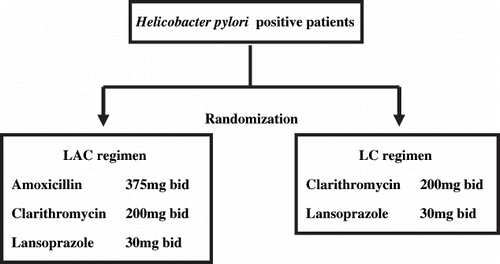Figures & data
Figure 1. Demographic schema of study design. Seventy-seven hemodialysis patients underwent upper gastrointestinal endoscopy. The presence of Helicobacter pylori (H. pylori) was assessed by histology, rapid urease test and cultivation. Positive H. pylori status was assigned based upon at least two positive results. Patients who were diagnosed as being H. pylori-positive and wished to receive therapy were enrolled into this study. Patients were randomly assigned into two groups.
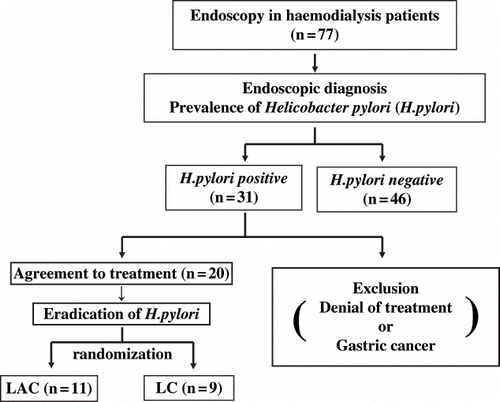
Figure 3. Percentage of Helicobacter pylori-positive patients relative to age. Cases of Helicobacter pylori infection were not observed until age forty years or above.
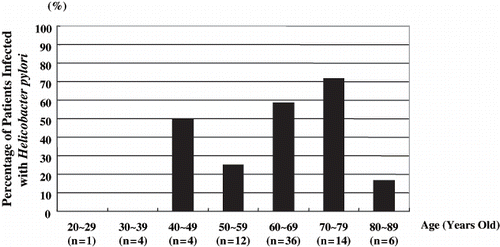
Figure 4. Percentage of patients infected with Helicobacter pylori relative to the number of elapsed years since beginning dialysis. There was no correlation between the duration of patients’ hemodialysis and the prevalence of H. pylori infection. In patients with prolonged duration of hemodialysis, the proportion of H. pylori-positive patients did not change.
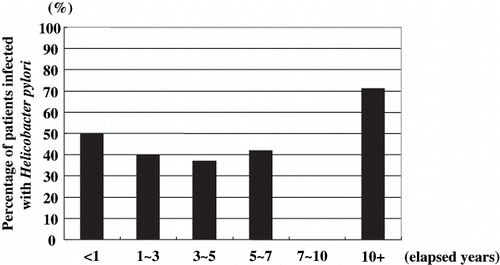
Figure 5. Success of treatment in eradicating Helicobacter pylori. Of the eleven patients selected to receive the LAC regimen, eradication was successful in nine (72.7%). H. pylori were eradicated in three of the nine patients (33.3%) who received the LC regimen.
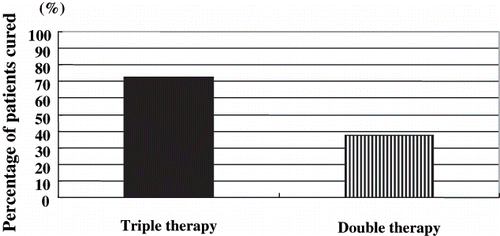
Table 1 Reported frequency of H.pylori infection in haemodialysis patients in 1991∼2005
Table 2 Reported percentages of cured H.pylori-infected haemodialysis patients treated from 1991–2005
